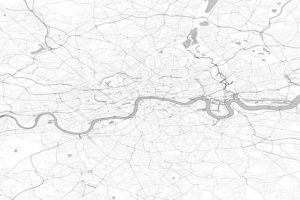In 1993, the nation of Czechoslovakia became the Czech Republic and Slovakia. Although I’m sure there were many valid reasons for the Velvet Divorce, it was unforgivable from the perspective of a young boy just figuring out the world. It seemed eminently unfair to suddenly change the rules.
As a kid, many of my favorite books were atlases. I still have a terribly-outdated 1994 edition National Geographic picture atlas, one of the foundations of my knowledge of the world. Years later, the pictures bring back memories of hours spent pouring through the book, finding new facts about various parts of the globe.
Why do we love maps? I’ve never been truly able to answer that question to my own satisfaction. There are many reasons, but each one seems hollow somehow. Still true, but not complete.
Maps let me imagine places I’ve never been, and revisit places I miss. I’ve lately been fascinated with city maps, for this reason. I either look at where I’ve been, or where I want to go. If I were in Boston right now, where would I go? What would I do?
 Of course, viewing a map is an intensely personal experience. Looking at the map of London, for instance, I see the Serpentine in Hyde Park, near the flat in South Kensington where I crashed on a friend’s air mattress. Someone else may notice a particular bend of the Thames that has particular meaning to them, while I skip over that to some otherwise unremarkable feature that few others would care about.
Of course, viewing a map is an intensely personal experience. Looking at the map of London, for instance, I see the Serpentine in Hyde Park, near the flat in South Kensington where I crashed on a friend’s air mattress. Someone else may notice a particular bend of the Thames that has particular meaning to them, while I skip over that to some otherwise unremarkable feature that few others would care about.
Maps help us make sense of a vast world that we can only experience in small pieces. Some maps are useful, some are beautiful, but they always provide information to help us make sense of the world around us.